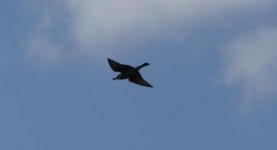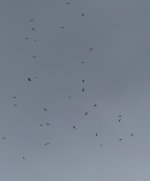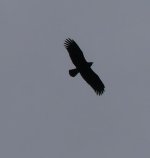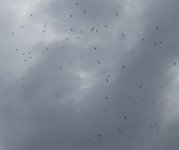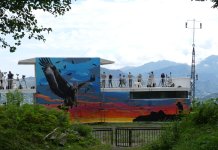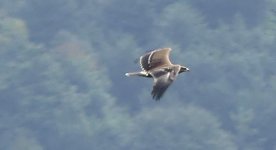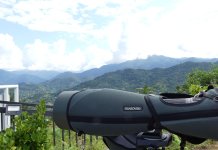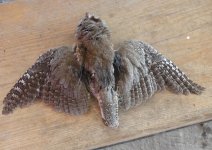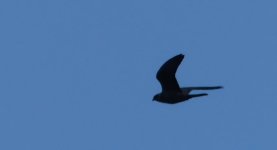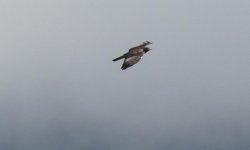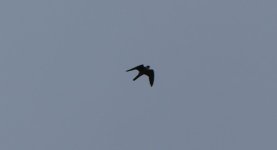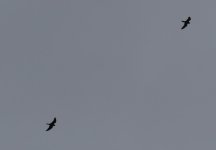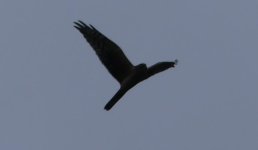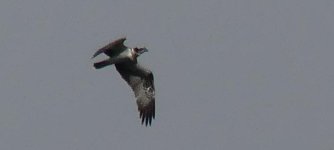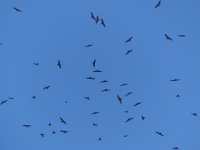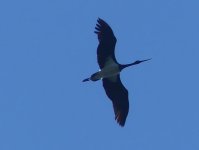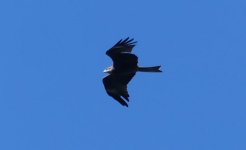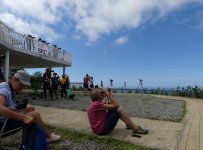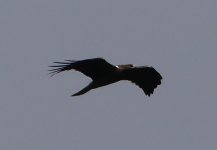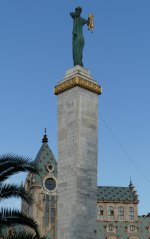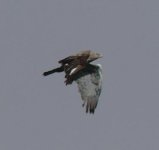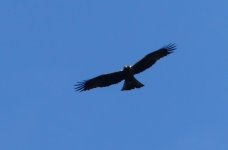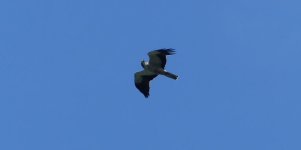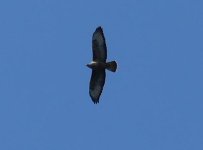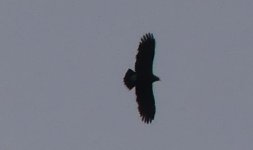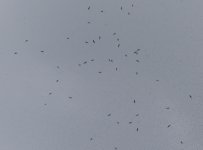rollingthunder
Well-known member

Another glorious day of sunshine and light cloud thickening towards the end of the day. Any breeze was imperceptible.
Although only just over 10k birds were counted streams continued to move over and adjacent to us and the sea for most of the day. Black Kites have probably peaked and it will be the turn of Steppe Buzzard and to a lesser degree both Booted and Short-toed Eagle. StE is nowhere near as abundant here as they are at Tarifa where I have seen thousands over a 10 day period rather than several hundred at Batumi. Booted Eagle numbers were excellent yesterday with 700+ being recorded the record standing at around 900. They appeared in every stream indeed some small kettles of ca20 birds contained mainly BE.
Harriers, Marsh aside, were thin but i managed to latch on to 2 of the 3 Pallids including another smart male. Lots of Marsh giving close views as the glided languidly over and around the Obs. Steppe Buzzards notably picked up with the distinct underwing and pale tail being visible even in very high individuals. Honeys have tailed off but 250+ yesterday included some nice dark birds. I managed 2 out of 3 Ospreys and 1 of a dozen Black Storks.
After 3 o'clock and particularly the last hour between 4 and 5 the larger Eagles dominated. Lesser Spotted Eagle had been moving all day but now there were thermals containing upto 6. My own day count was 100. A single Greater was picked out as was 2 Steppe.
Bird of the day goes to probably the most sought after non raptor at either Watchpoint. In amongst a kettle that contained BK/HB/BE and a LsE was an unmistakable.........Great White Pelican! This brute of a beauty was picked up several miles away by observers in the upper level at Sak. The bird continued to, thankfully, drift more or less over our heads - a stonker of a bird that turned out to be a Lifer for most of the young counters. For me it was a Western Palearctic tick and a reaquaintance with a species I last saw over 45 years ago in the soda lakes of Kenya's Rift Valley.
Today is forecast wall to wall sun peaking at 27c - my last day of Batumi birding before travelling to Kars to catch the Dogu Express to Ankara.
I have been kept up to date with the fall of Yank Wood Warblers deposited in West Wales by the tail end of several depressions and it is mouth -watering in the same way that my 80's Scillies Autumn visits were.
Good birding -
Laurie -
Although only just over 10k birds were counted streams continued to move over and adjacent to us and the sea for most of the day. Black Kites have probably peaked and it will be the turn of Steppe Buzzard and to a lesser degree both Booted and Short-toed Eagle. StE is nowhere near as abundant here as they are at Tarifa where I have seen thousands over a 10 day period rather than several hundred at Batumi. Booted Eagle numbers were excellent yesterday with 700+ being recorded the record standing at around 900. They appeared in every stream indeed some small kettles of ca20 birds contained mainly BE.
Harriers, Marsh aside, were thin but i managed to latch on to 2 of the 3 Pallids including another smart male. Lots of Marsh giving close views as the glided languidly over and around the Obs. Steppe Buzzards notably picked up with the distinct underwing and pale tail being visible even in very high individuals. Honeys have tailed off but 250+ yesterday included some nice dark birds. I managed 2 out of 3 Ospreys and 1 of a dozen Black Storks.
After 3 o'clock and particularly the last hour between 4 and 5 the larger Eagles dominated. Lesser Spotted Eagle had been moving all day but now there were thermals containing upto 6. My own day count was 100. A single Greater was picked out as was 2 Steppe.
Bird of the day goes to probably the most sought after non raptor at either Watchpoint. In amongst a kettle that contained BK/HB/BE and a LsE was an unmistakable.........Great White Pelican! This brute of a beauty was picked up several miles away by observers in the upper level at Sak. The bird continued to, thankfully, drift more or less over our heads - a stonker of a bird that turned out to be a Lifer for most of the young counters. For me it was a Western Palearctic tick and a reaquaintance with a species I last saw over 45 years ago in the soda lakes of Kenya's Rift Valley.
Today is forecast wall to wall sun peaking at 27c - my last day of Batumi birding before travelling to Kars to catch the Dogu Express to Ankara.
I have been kept up to date with the fall of Yank Wood Warblers deposited in West Wales by the tail end of several depressions and it is mouth -watering in the same way that my 80's Scillies Autumn visits were.
Good birding -
Laurie -




